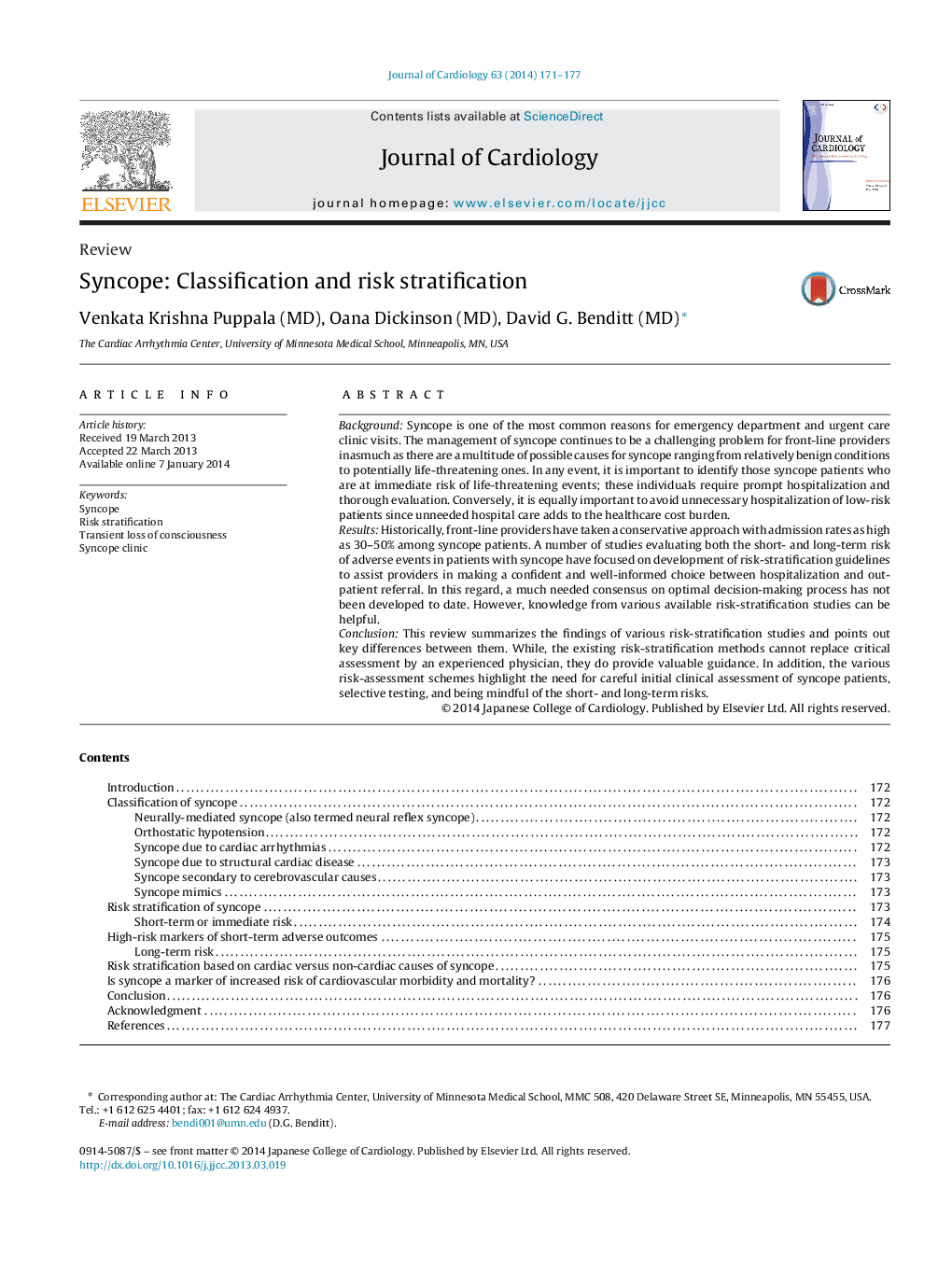| Article ID | Journal | Published Year | Pages | File Type |
|---|---|---|---|---|
| 2963046 | Journal of Cardiology | 2014 | 7 Pages |
BackgroundSyncope is one of the most common reasons for emergency department and urgent care clinic visits. The management of syncope continues to be a challenging problem for front-line providers inasmuch as there are a multitude of possible causes for syncope ranging from relatively benign conditions to potentially life-threatening ones. In any event, it is important to identify those syncope patients who are at immediate risk of life-threatening events; these individuals require prompt hospitalization and thorough evaluation. Conversely, it is equally important to avoid unnecessary hospitalization of low-risk patients since unneeded hospital care adds to the healthcare cost burden.ResultsHistorically, front-line providers have taken a conservative approach with admission rates as high as 30–50% among syncope patients. A number of studies evaluating both the short- and long-term risk of adverse events in patients with syncope have focused on development of risk-stratification guidelines to assist providers in making a confident and well-informed choice between hospitalization and out-patient referral. In this regard, a much needed consensus on optimal decision-making process has not been developed to date. However, knowledge from various available risk-stratification studies can be helpful.ConclusionThis review summarizes the findings of various risk-stratification studies and points out key differences between them. While, the existing risk-stratification methods cannot replace critical assessment by an experienced physician, they do provide valuable guidance. In addition, the various risk-assessment schemes highlight the need for careful initial clinical assessment of syncope patients, selective testing, and being mindful of the short- and long-term risks.
